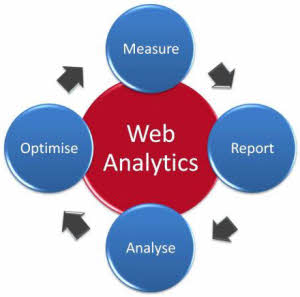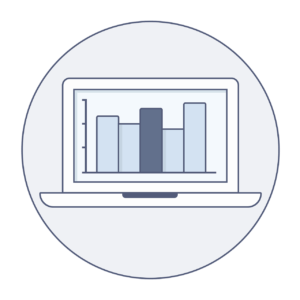
by Marianna Muscat | Nov 14, 2017 | Online Marketing
There are many online marketing tools that can help you attract new visitors to your website, and increase your online exposure – from paid Facebook advertising, to Google Adwords and banner adverts. You’ve probably used, or at least heard of, all of these. But what about native advertising?
Native advertising is a relatively new form of online advertising, where adverts are designed to blend in with a website’s look and feel. This is a more unobtrusive form of advertising that is proving highly effective for a number of reasons:
Native advertising is cost-effective
Banner adverts on popular websites are often very expensive. At the same time, pay-per-click ads that target customers via Google keywords can also be costly, especially in competitive industries. Native advertising on the other hand often allows for much lower and customisable budgets, so that even small businesses find them financially viable.
Native adverts have a lower cost per click
Most native advertising platforms allow for very specialised targeting. This allows you to create adverts that are highly relevant to specific segments of your target market, and this high level of customisation results in a lower cost per click.
You’re also likely to attract more clicks when you use native advertising, as levels of engagement are far higher, as compared to traditional digital marketing. The reason for this is likely due to the unobtrusiveness of the adverts that are created to match the web design of the page on which they appear.
Native adverts are less likely to annoy website visitors
A lot of banner advertising is distracting and annoying for internet users, so much so that most people are aware of adverts in their peripheral vision but actually tune them out. Because native advertising is less in your face, and blends in with the design of the page on which they are placed, they are actually more likely to attract the attention of website visitors in a positive way.
Native advertising attracts genuine customers
Native adverts blend seamlessly into a website which makes them unobtrusive, however they are clearly marked as adverts so there is no deception involved. Internet users tend to avoid banner adverts, and a high percentage of click throughs from these adverts are accidental. With native advertising however, you’re assured that a large portion of customers click on your advert out of genuine interest.
Are you looking for expert digital marketing services for your business? Contact us today for help, advice strategies that work!

by Marelise da Silva | Nov 9, 2017 | Articles, Online Marketing
It goes without saying that creating a personal experience is the gold standard for all online marketing endeavours, and this is especially true for online sales and marketing. The technology to create personal user experiences in ecommerce has been around for years, but the reality is that personalisation – effective personalisation that translates into actual sales – is extremely hard to achieve.
Why though? We have the technology, so why can’t we make it work? Assuming that a company has the resources (up to date personalisation technology and relevant customer data) and the time to develop and implement cutting edge personalised digital marketing strategy, the real problem might be the sheer volume and complexity of information that personalisation technology gives us access to. It’s a little overwhelming!
The following 3 dilemmas are common obstacles to effective personalised ecommerce marketing:
There’s so much data available for segmenting an audience
With so many data points available for personalisation, it can be difficult to decide exactly how to segment your audience. Do you segment my gender? Age? What about real time specifics such as the weather or time of day? How do you decide what is important? There simply isn’t enough time to test all options, and anyway even if you do create multiple segments, having too many is not a good thing and fragments your digital marketing strategy too much to be effective.
The solution: Choose a data point for which you have good, solid information as well as a clear idea of how to personalise, and use that to segment your audience. A great example is return website visitors, or people who used a specific search term to reach your website. Create personalised content marketing for these groups. By keeping your primary personalisation strategy simple, you have a greater chance of making personalisation technology work for you and be relevant to your customers.
Personalisation is not an exact science, so how do you ensure effectiveness?
Personalised content marketing becomes rather vague when you go beyond simple data points, and one also begins to wonder how relevant certain personalisation data actually is. For example, if you know that someone lives in Sandton, drinks coffee, and recently purchased the new Taylor Swift album, will it really help you convince them to buy a t-shirt? And if it’s raining, will this really make a difference to your strategy?
The solution: Keep it simple. Yes, men and women do shop differently, so take this into account. And yes, past shopping behaviours on your e-commerce site are relevant. More specific data can be used for split testing, which is a useful way of determining strategies and market segments that could be giving you big revenues. Always remember however, that if personalising certain segments isn’t delivering actual results as sales, then you need to cut these out of your strategy as it is a waste of time and money.
How do you apply personalisation strategies across the board?
Once you have found a personalisation strategy that is effective for your business, and delivers great results, you need to decide how big a role it plays in your overall online marketing strategy. And how your strategy can be scaled to suit different product lines, devices etc. But how do you decide? Tracking effectiveness can be difficult too – you may have a market segment that is not performing well, but how do you know whether that is because of your personalisation strategy, or simply because that segment is less likely to convert engagement to sales?
The solution: Personalisation should be part of, but not the entire basis of your online marketing strategy. Do not apply personalisation in any areas where it might not have longevity. In the long term, you should be using personalisation not just as a tool to make sales, but to gain important insights into your target market. In this way, the real benefit of personalisation is qualitative, not quantitative.
Do you need help with digital marketing strategy for your business? Contact us today for expert advice and service!

by Marianna Muscat | Oct 3, 2017 | Online Marketing
Is your content marketing going stale? Then it’s time to look at new ways to generate content and topic ideas.
Many product and service companies generate vast amounts of data within their businesses. While this data is often used to improve business efficiency and sales, it can also be incorporated into your content marketing campaign. Consider the following ideas:
Share more information about your business with your followers
Many people find infographics and statistics very interesting. If you could create a unique infographic or content piece about the popularity of your products across the country, sales spikes and trends, many people would be interested.
If you check out the OK Cupid blog, you will see that they regularly post articles about dating trends, sociological patterns, race and attractions, and so forth. Not only are these types of insights illuminating for the brand, but their audience is also interested in this type of information, making it ideal to share. Your company will also benefit if the article gets picked up by the press and gets republished, thereby driving traffic to yourself.
Get the right content to the right people
If you use data from your call centre, you can pick up on common queries and problems, and generate content that addresses these challenges. One of the goals of content marketing is to remove barriers to buying your product, so if you are able to pick up on common issues and help people, then you’re taking a step in the right direction.
Need help with your content marketing? Then contact WSI OMS today.

by Francois Muscat | Jul 24, 2017 | Online Marketing
Paid online advertising or Pay-per-click advertising with Google Adwords, is an attractive option to get traffic to your site, but if it’s not done properly, you could be throwing money away needlessly. Here’s how to make the best of your PPC advertising.
Keywords and Analytics for PPC ROI
- Be flexible and prepared for on-going keyword research, analytics, tests and adjustments. Experiment a little to see not only what keywords bring you customers and what don’t, but create ‘landing pages’ for the click-through from specific ads to gauge how users behave once on your site. Do they bounce of or start navigating your website? What ‘call to action’ on a page gets results?
- Ensure click-through is of value – from people who are looking for exactly what you offer. It’s no good for SEO or ROI if they bounce off your site, and why pay for clicks that seldom if ever generate conversion – either contact or sales? Do this by sacrificing click-through quantity for quality. Use ‘long-tail keywords’ (descriptive phrases containing several single keywords) that describe precisely what you offer, not short-tail or single keywords that better describe the category of what you offer – and that will cost you a fortune. Do it from the start – you are paying for each one, so better ten clicks a month that generate no sales than a hundred clicks that generate no sales.
- Use customer feedback (such as checkout comment or query boxes) with survey tools to gain insight into language they use to search and what they value – and might search for again.
Integrated digital marketing
- Use ‘organic’ SEO and Adwords together for an integrated campaign. Site analytics along other user metrics gained over time through an ‘organic’ SEO campaign will help you maximise your PPC campaigns reach and efficacy.
- For large campaigns, Demand Site Platforms automate your ad bidding, place your media and collate PPC and other user data.
- Use a professional company to manage your paid advertising, taking care of all of the above along with SEO, app, site and mobile site development and digital and social media marketing. An integrated approach is an investment in maximum ROI. In the digital world, many hands may not make light work, but there’s no doubt they do make the most efficient, skilled and ultimately cost-effective team work.
The above are just some tips on getting the most from your paid advertising. There’s a lot more to it…and as the online world and the unique reach it gives advertisers evolves, there’s bound to be more to it every year.
Contact us today for more information on how WSI OMS can help make the most of your pay per click advertising– alone or as part of an integrated digital marketing campaign.

by Francois Muscat | Jun 21, 2017 | Online Marketing
Google Analytics is a free web analytics service that tracks everything that happens on your website. It is quite simple to use and has been deemed a must for businesses of all types and sizes. Here are 5 awesome things that it can do, all of which are sure to benefit your online marketing efforts:
- Tailor which Data You See First
Are you more interested in analysing your website’s bounce rate? Perhaps you want to see the number of weekly visitors immediately after logging on? Regardless of the stats you wish to analyse first, you can customise this using Google Analytics’ Dashboards feature.
- Find Out What People Are Searching for
If your website has a handy search function (it definitely should!), Google Analytics can provide you with all of the data regarding what people actually searched for.
- Find Out Which Links People Are Clicking on the Most
You can see all this information by navigating to In-Page Analytics under the Content menu. The In-Page Analytics will pull up your website in the Analytics browser and provide you with a visual representation of the number of clicks that each internal link on your site has received.
- Discover Which Pieces of Content Are the Strongest
Using Google Analytics, you can find out which pieces of content marketing gold are holding your visitors’ attention the longest. View this info by clicking on the Content menu and selecting ‘Pages’ under ‘Site Content’.
- Find Out Where People Are Opting Out During the Checkout Process
Are they leaving right before paying? Is this because you are requesting too much detail and making your potential clients feel like you are wasting their time? This will provide you with better insight into how best to optimise your website’s checkout process to increase conversions.
Need help tracking your online marketing efforts? Then it’s time to get in touch with a digital marketing agency you know you can trust. Give us a call at WSI OMS for more information today.

by Marelise da Silva | May 18, 2017 | Online Marketing
Countless small business owners worry about how their seemingly tiny budget can ever compete with the gargantuan amounts that so many other enterprises are spending when it comes to digital marketing… and this is mistake number one! The good news is that with the right planning, a dedicated team (no matter how small) and the ambition to make online marketing work for you, there is no reason why a small business can’t make a lasting impact within the digital sphere. Here are the top 3 digital marketing errors that most small businesses of today are making:
- Lack of a Digital Marketing Strategy
While most small business owners are trying all of the tools available to them in the form of social media marketing, content marketing and web design, for example, they are often doing so without a solid strategy in place. Without a solid digital marketing strategy, maintaining consistency is impossible, as is effectively measuring ROI.
- Not Paying Attention to Their Website
If a small business owner can’t afford to spend thousands on PPC advertising, he or she should take the time to work on improving his or her organic rankings instead. The easiest way in which to do this, aside from mastering the art of content marketing, is to make sure that his or her website is fully responsive (i.e. mobile-friendly). This simple alteration is sure to send SEO rankings soaring!
- Not Using Social Media to its Full Potential
Once again, if pay per click advertising is just not on the cards, there are other ways in which to increase one’s social media following. Small business owners need to start getting creative in an effort to encourage their already-existing followers to share and interact with their posts. More shares lead to a wider reach. Hopefully, this will lead to a better social media following and more website visits too!
WSI OMS is here to assist you in taking your small business to new heights. As experts in all things digital marketing related, from email marketing to web design and everything in between, we offer you the (affordable) helping hand that you need to make digital marketing work for you. Contact us today to find out more.







